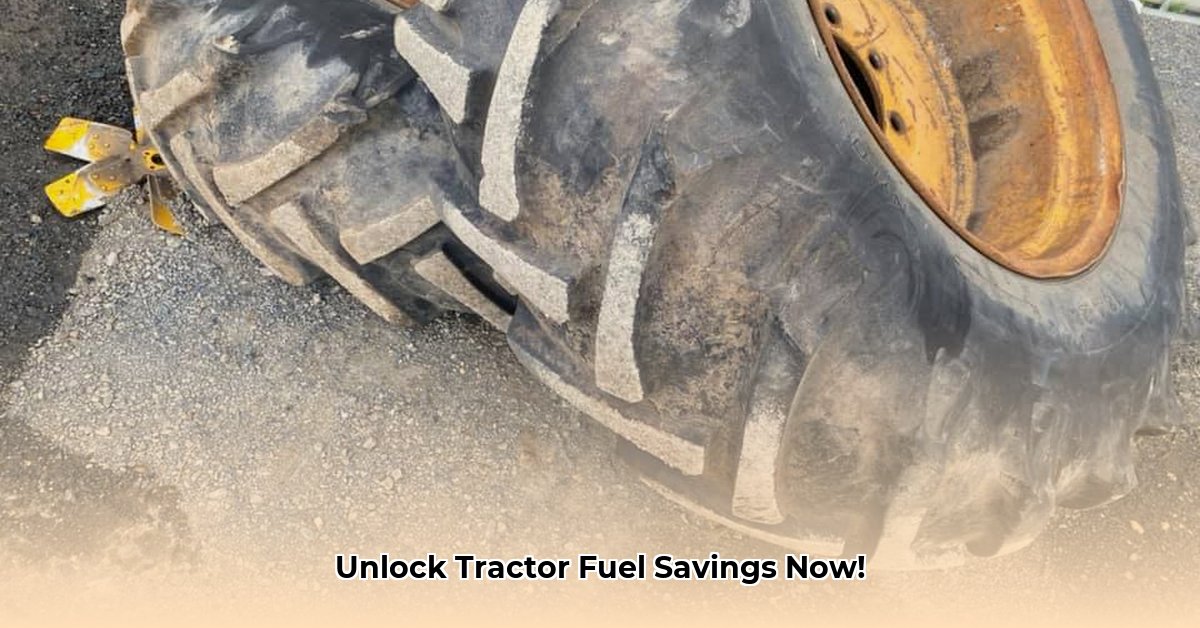
Understanding the 18.4 x 28 Tractor Tire Market
The demand for 18.4 x 28 tractor tires is significant within the agricultural sector, driven by the widespread use of tractors in various farming operations. However, comprehensive sales data remains surprisingly elusive, hindering a precise assessment of their overall market size and impact. This lack of transparency from manufacturers presents a critical data gap impacting environmental analysis. How can we effectively measure the environmental impact of a product without complete sales figures? For more on tire maintenance, see this helpful resource.
Sustainability Assessment: A Data Deficit
A crucial question regarding 18.4 x 28 tires centers on their environmental sustainability. Currently, detailed data on the materials utilized in their manufacture and the complete production process is scarce. The absence of comprehensive Life Cycle Assessments (LCAs) – detailed analyses of a product's environmental impact from raw material extraction to disposal – prevents a thorough evaluation of their overall ecological footprint. This includes crucial questions about the sourcing of rubber, the energy consumption in manufacturing, and the efficacy of existing tire recycling programs. "The lack of transparency regarding tire production methods severely limits our ability to promote truly sustainable practices," states Dr. Anya Sharma, Environmental Engineer at the University of California, Davis.
Operational Efficiency: Maximizing Fuel Savings
While improved traction is a key selling point for 18.4 x 28 tires, translating this into quantifiable fuel savings requires rigorous data collection. Precise measurements of fuel consumption per acre worked are necessary to determine the actual economic and environmental benefits. Implementing precision agriculture techniques, such as GPS-guided tractor operation and real-time tire pressure monitoring, can significantly enhance operational efficiency and minimize fuel waste. "Even small improvements in tire pressure can lead to substantial fuel savings over the course of a growing season," notes John Miller, Agricultural Consultant, Miller Ag Solutions. What constitutes a significant fuel saving in this context?
Stakeholder Analysis: Collaborative Action for Sustainability
Achieving greater environmental sustainability in 18.4 x 28 tire production and use demands a coordinated effort among various stakeholders.
| Stakeholder | Short-Term Actions (0-1 Year) | Long-Term Actions (3-5 Years) |
|---|---|---|
| Tire Manufacturers | Publish comprehensive Life Cycle Assessments (LCAs); improve material transparency. | Invest in R&D for sustainable materials (recycled rubber, bio-based alternatives); enhance recycling. |
| Farmers/Agribusinesses | Implement tire pressure monitoring systems; explore fuel-efficient tire models and usage. | Adopt precision agriculture techniques; investigate tire retreading and responsible disposal methods. |
| Governments/Regulators | Mandate LCA reporting for tires; incentivize sustainable tire production and disposal. | Develop comprehensive policies supporting sustainable tire lifecycles, including waste management. |
| Consumers | Demand greater transparency and sustainable options from tire manufacturers. | Advocate for improved recycling programs and responsible end-of-life tire management solutions. |
Risk Assessment: A Holistic Perspective
A comprehensive risk assessment for 18.4 x 28 tires should consider their entire life cycle. This includes evaluating greenhouse gas emissions during production and use, microplastic pollution from tire wear, and potential hazardous waste from disposal. Prioritizing mitigation strategies based on a thorough risk analysis is essential for achieving significant environmental improvements. The debate continues on whether manufacturing processes or tire wear and microplastic pollution present the greatest environmental issue. Further research is necessary to inform appropriate mitigation efforts.
Key Findings and Recommendations
Three pivotal points emerge from this analysis:
- Data Transparency is Crucial: The lack of readily available data on tire sales, manufacturing processes, and environmental impacts significantly hinders effective sustainability efforts.
- Collaboration is Key: A concerted effort involving tire manufacturers, farmers, and regulatory bodies is necessary to drive progress toward more sustainable tire production and usage.
- Life Cycle Assessment is Paramount: Comprehensive LCAs are essential to pinpoint environmental hotspots and inform the development of effective mitigation strategies.
This necessitates a multi-pronged approach focusing on data collection, collaborative action, and life cycle assessments. Only through these strategies can we optimize 18.4 x 28 tractor tire use for both fuel efficiency and environmental sustainability.